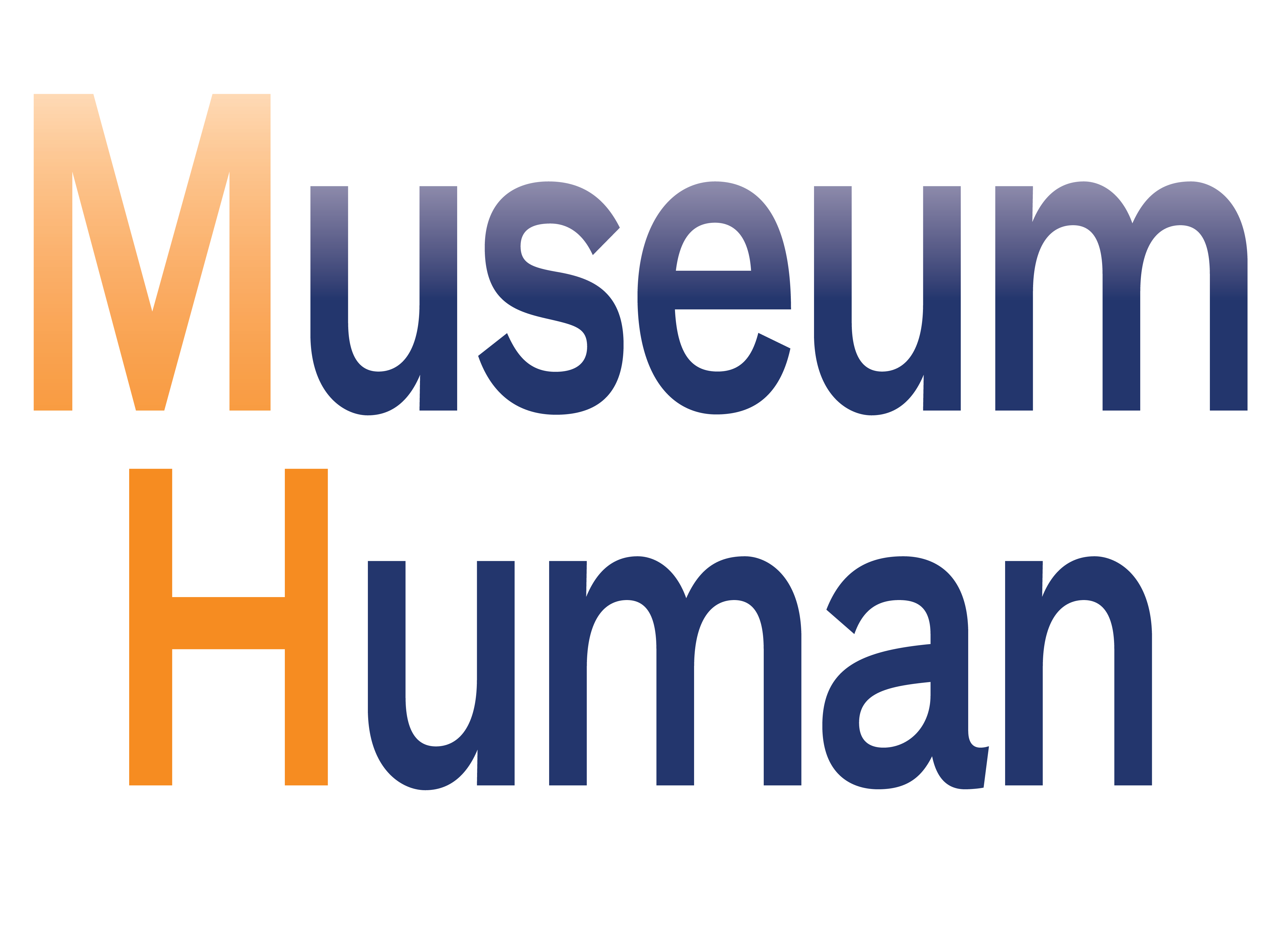
Museum workers in tech areas of the field have been hearing about the blockchain for years. Who knew it would get all monetizey?
We'll get to the blockchain in a moment (I know, something-coin might triple in value by then).
I saw a Twitter thread led off by someone I respect in the museum field, asking how to feel about all the animus directed towards museum leaders since they were also a leader; the person said that they tried hard to be a respectful, inspiring manager practicing servant leadership. (A sort of "not all museum leaders," if you will.)
Look, I know people in leadership positions who are wonderful people. I have no reason to doubt the OP's intention as a leader. But I agree with the best responses to the tweet, that the derision is as much aimed at the museum power structure as individuals (though there's plenty of awful leaders to go around). It's not clear that the current org setup of museums, where concerns about the collections and scarcity outweigh concern for workers and autonomy, can allow more than the rare handful of people to be enlightened, humane leaders.
Leaders who are doing it right should model that behavior for other museum higher-ups at their institution and in the larger museum field. They should be undermining the structure that helped them get to this point and that is still, for the most part, harmful and exploitative to the vast majority of museum workers. It might provide useful learning moments for them and agency, autonomy, and better working lives for museum workers in general.
Also, before the chain (don't worry, blah-coin just lost 83 percent of its value), some thoughts from org culture consultancy NOBL's recent newsletter about being the new leader of a remote team. The advice is useful for any leader—or anyone, for that matter—whose team makeup has changed to mostly remote in the past year. I liked one point in particular:
Don’t start from a position of scarcity. Time feels especially precious during Zoom meetings, and you might feel like you have to cram a bunch of specifics into your first encounter. You don’t. Instead, plan for multiple interactions. Then, in your first meeting, have an outline of what you want to cover, but adapt it to follow the person’s needs.
Now scarcity is real—it's a societal pain point, not just a workplace one. The rest of the newsletter is along the lines of what I've suggested about de-centering and being flexible. It also had this useful link about thinking through the org's period when people are returning to the office, asking "what was the office for?"
And here's Harvard Business Review reminding us that orgs need a long-term remote work strategy. Leaders have to create work life balance. Should there be training for leaders and all staff in "remote work"? In "relational" skills? How do we avoid "two classes" of on site and remote workers? (As I've suggested, a lot of this training should be worker-led.)
Finally, before the chain (art-coin is up! but museum-coin is down!), I don't quote Seb Chan's Fresh & New newsletter (now on Buttondown) nearly enough. Chan, now Chief Experience Officer at the Australian Centre for the Moving Image in Melbourne, and previously Director of Digital & Emerging Media at the Cooper-Hewitt in New York, blends museums, music, mixtapes, animation, and gaming in his shifting universe of working in a cultural field and living in a field of cultures. It's a worthwhile and enjoyable read since he doesn't publish on the regular schedule that I need to keep me grounded. (You can read a little of his newsletter without subscribing, so please consider supporting his work.)
One section of Chan's latest newsletter resonated with me on many personal and professional levels, as he describes a new report from Mona Sloane at NYU and her account of "the digital shadow city that emerged during the pandemic and maps some of its terrain and interactions through digital ethnographic approaches."
Maps were one of my childhood obsessions. As a youngling, I pored through my family's Rand McNally North American road atlas until it fell apart. Though I'm not a gamer any more, I used to love the way the map in a first-person game like Marathon would unfold as you ran around the levels avoiding creatures and finding weapons and teleportation pads.
Here's Chan:
The break down of practices into curation, membership, public safety, affordances, infrastructure, temporality, publicness, intimacy, and locality is a very useful way of drawing out the different types of participation and the unevenness. As Sloane points out, the inequalities of New York were exacerbated and amplified by the shift to the digital communities of the pandemic - but not always in the ways that one might think. In so doing the study draws out some of the nuances of what made offline community practices function.
In a similar vein, Shannon Mattern’s fantastic new essay, How To Map Nothing, in Places Journal sent me down a rabbithole of map-thinking.
For me, reading those maps as a young child, I would imagine my bed a tiny spaceship, journeying for thousands of years through the enormity of the universe. Maybe I'm the worst kind of introvert who didn't mind the pandemic bubble (though I miss the people at the museum terribly). The map I build is of the relationships in the always-shifting ecosystem at The Met.
I'll have a full post on maps before too long. In the meantime, read the first two parts of the stirring post "Cartography," by Dr. Porchia Moore on The Incluseum.
Now, on to the chain …
If you're reading this and not a subscriber to Museum Human, consider scrolling to the bottom and signing up now—it's free and is the only way to read the site's longer weekly post on the organizational culture of cultural organizations.
Maps are analogies or metaphors or stand-ins or viruses which replace the territory they purport to describe. At least they can be useful. Anyone who's been led astray by an online driving map may disagree, but maps are something.
It's still not clear what the blockchain is, nor what it can do for museums. Sure, there have been discussions about airtight provenance and unfakeable collection without corruptable authorities, an Ayn Randian-trust-no-government future of tech solutionism to the problem of how damn slow and annoying bureaucracy is. Conferences and their related sites have tried (like here, but it's easy to search for more). At the Museum Computer Network 2018 conference, my program co-chairs and I worked to pull together a session on the blockchain and museums, but it was contentious going, especially among collections and rights people.
For something purporting to be an open currency, the chain can feel the opposite of open. Douglas Rushkoff has written many times about how modern—especially technological—currencies move further and further away from having real meaning for real people. (Read his Atlantic piece here.)
The best recent take on the craze for non-fungible tokens is from Anil Dash, who helped create them. It's hard to know what's less surprising—that derivatives of derivatives of derivatives eventually came for the art market, that it took this long, or that people are still trying to get in on this half-pyramid-scheme, half pump-and-dump racket (or that people who are in on them try to deny that they're either of these).
There is probably some useful nugget of encryption buried in the soft flesh and candy shell of the chain, but disruption makes money for the disruptors and mostly ruin for the disrupted except for a few giant companies which come in like the foreign king at the end of a Shakespeare play after all the characters have died. It's a disruption which creates its own scarcity—and scarce items are booms designed to create busts.
There are also environmental issues to consider. "Everest Pipkin" writes, considering specifically NFTs and the precarity of the artist:
I understand first-hand the desperation of trying to live in a world that has systemically undervalued and undercut the arts, and how compelling a vision of escape can be. I truly do want to live to see the world that rewards artists for making the work they would like to make without asking them to jeopardize their health, stability, and creative integrity. This is not just my political belief- it is a desire that would directly benefit me and those I love. It is a future I have to believe in to keep going every day.
However, we must get there through collective empowerment and strong social programs like universal basic income, universal healthcare, divestment from warfare and policing, a regulated real estate market that does not capitalize on housing scarcity and rent, worker unions, food programs, environmental protections, and actual, functioning income taxes on the wealthy. An individualist fantasy of a pyramid scheme, made to reward investors over artists and directly thieving from our shared future just isn’t it.
Yes, NFT means nothing. Or even worse (posted by MCN on the same day as this LOTW). There's even an alt-coin already.
Look, I'm all for some disruption (here and here), especially when it comes to org charts and power imbalances. Museum Hack disrupted the role of museum educators and volunteers in providing trained and practiced art history narratives to visitors, but it may have had some role in opening up museum storytelling to more varied perspectives But the NFT is all about the supposed profit of art-world speculation, without the upkeep, like a digital pet. Read this tweet for more.
It's easy to say, "if it's too good to be true, it probably is," but it's not even clear, beyond speculation and fast profits, just good NFT's are supposed to be providing to the art world, beyond the minting of money. Like any scheme, it's important to find that sweet spot between excitedly pumping up value and the glut of too many desperate speculators rushing in. If that sounds like capitalism (also here), you're getting the point.
I suspect I'll be writing more in the future about NFTs and the general need to speculate in any capitalist endeavor, and what that means for mission-driven fields like museums. In the meanwhile, enjoy the links, and see you later this week for a post about how hard it is for museums to end projects.
If you're reading this and not a subscriber to Museum Human, consider signing up for a free subscription below—it's the only way to read the site's longer weekly post on the organizational culture of cultural organizations. Thank you for reading!
cover image by Tamanna Rumee on Unsplash [description: a circle of paper clips on a blue background]

Links of the Week: April 13, 2021: Chain of Fools by Robert J Weisberg is licensed under a Creative Commons Attribution-NonCommercial-ShareAlike 4.0 International License.






